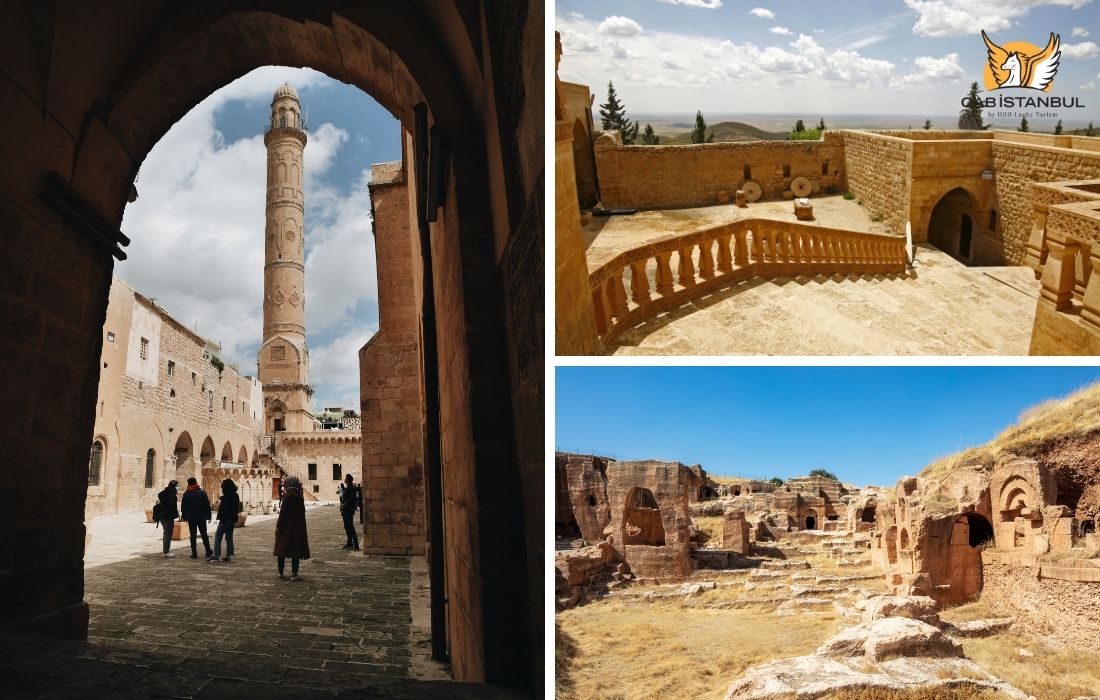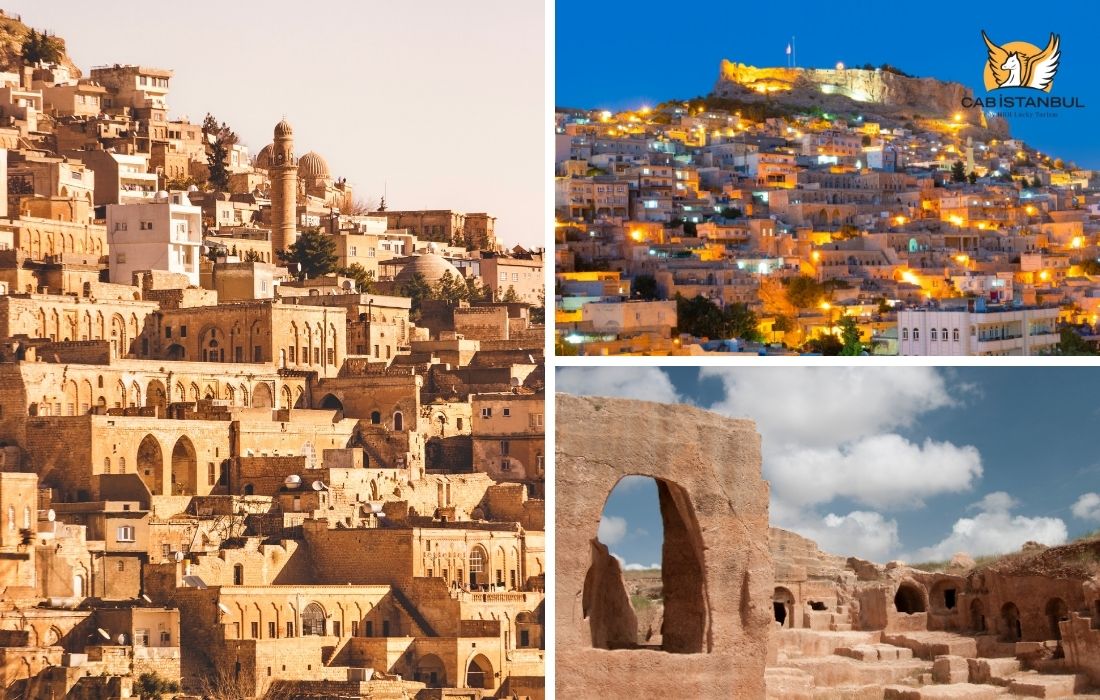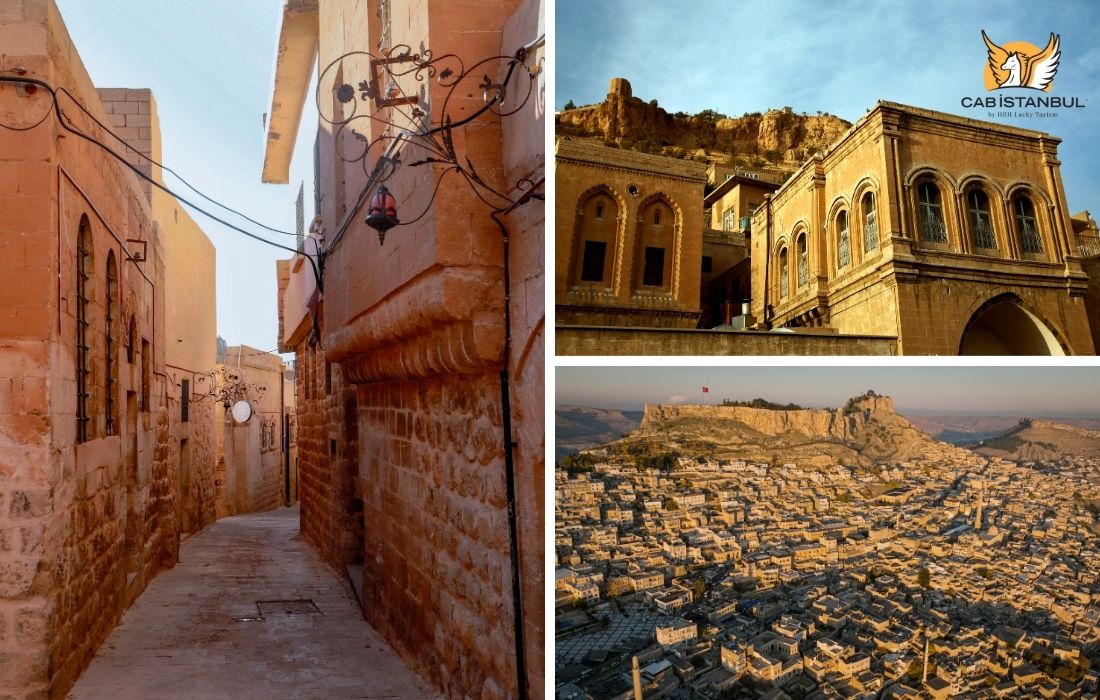Things To Do In Mardin
2026-01-09

Mardin, nestled in the southeastern part of Turkey, where history, spirituality, and unique architecture converge. This ancient city, famed for its golden-stone houses, stunning panoramic views, and multi-religious harmony, offers a journey back in time. Walking through the old town, you'll be captivated by the intricate details of stone masonry and the labyrinthine narrow alleys of Old Mardin.
Start your exploration with the iconic Mardin Castle, offering sweeping views of the Mesopotamian plains. Don’t miss the majestic Kasımiye Madrasa, a 15th-century architectural gem blending Islamic art and educational history. Nearby, the Zinciriye Madrasa and Ulu Mosque showcase the spiritual heart of the city, while the legendary Deyrulzafaran Monastery offers insights into the Syriac Orthodox Christian heritage.
Venture to Midyat, renowned for its delicate telkari (silver filigree) craft and the ancient Mor Gabriel Monastery, one of the oldest surviving Christian monasteries. For a step further into antiquity, the remarkable ruins of Dara Ancient City present an open-air museum of Byzantine life.
Food lovers will be delighted by the flavors of Mardin cuisine. Savor traditional dishes like kaburga dolması, irok (stuffed meatballs), and sembusek, paired with local delicacies like Syriac wine and mahlep liqueur. Discover artisanal shops selling handmade soaps, almond candy, and silver jewelry in the buzzing Mardin bazaars.
Whether you're captivated by its multi-cultural harmony, religious diversity, or historical treasures, Mardin is more than a destination—it’s a living museum. Ideal for visiting in spring and autumn, this enchanting city invites you to explore the crossroads of civilizations.
We provide comfortable İstanbul airport transfers and reliable chauffeur-driven car rentals with local drivers—perfect for exploring the region’s treasures with ease, comfort, and flexibility.
Mardin Tourist Attractions
Places To Visit In Mardin
Mardin perched atop a rocky hill overlooking the vast Mesopotamian plains, Mardin is a cultural mosaic that showcases Assyrian, Arab, Kurdish, and Turkish influences. Its golden-hued architecture, carved from local limestone, gives the city its signature warmth and historic charm.
Mardin Castle
Also known as the Eagle’s Nest, Mardin Castle towers over the city and offers breathtaking views of the Mesopotamian plains. With its 1600-year-old history and strategic location, it has been used by various civilizations as a fortress and lookout point. It’s one of the most iconic places to visit in Mardin.
Kasımiye Madrasa
The 15th-century Kasımiye Madrasa is an architectural masterpiece from the Artuqid era. Its serene courtyard, fountain, and symbolic design reflect the passage of life and death. The building also houses the El Cezeri Art Museum, making it a must-see for those exploring Mardin historical sites.
Zinciriye Madrasa
Built in 1385, Zinciriye Madrasa sits below Mardin Castle and features twin domes, intricate carvings, and panoramic city views. This medrese is not only a religious school but a remarkable example of Islamic architecture in Mardin. Don’t miss the chance to watch the sunset from its terrace.
Deyrulzafaran Monastery
The ancient Deyrulzafaran Monastery is one of the most significant centers of the Syriac Orthodox Church. Located just outside the city, it served as the patriarchal seat for centuries. Its architecture, chapels, and underground sanctuary make it a sacred and historical place to visit in Mardin.
Mardin Ulu Cami (Great Mosque)
Mardin Ulu Cami is the oldest mosque in the city, built in the 12th century. With its unique cylindrical minaret and spiritual ambiance, it represents Mardin’s Islamic heritage. It is a living place of worship and a peaceful stop for architecture and history enthusiasts.
Dara Ancient City
Located 30 km from the center, Dara Ancient City is an extraordinary archaeological site from the Byzantine era. It features city walls, tombs, churches, cisterns, and even a giant necropolis carved into rock. It’s often referred to as the “Ephesus of Mesopotamia”.
Mor Gabriel Monastery
Situated in Midyat, Mor Gabriel Monastery is the oldest surviving Syriac Orthodox monastery in the world, dating back to 397 AD. Still active today, it impresses with its grand stone walls, chapels, and peaceful courtyards. It is a symbol of ancient Christian presence in the region.
Midyat Old Town
Midyat is a charming town famous for its traditional stone houses, arched passageways, and telkari silverwork. Walking through the old town feels like stepping into a living museum. Local artisans still practice ancient crafts, and many mansions have been converted into boutique hotels or cafes.
Savur
Often called “Little Mardin,” Savur is a hidden gem with similar stone architecture and a peaceful atmosphere. Its multi-faith culture and small-town charm make it a great escape from the city. The narrow streets, historic homes, and welcoming locals offer a glimpse into Mardin’s rural life.
Mardin Museum
The Mardin Museum, housed in a beautifully restored Syriac Catholic building, showcases artifacts from the Assyrian, Roman, Byzantine, and Ottoman eras. It’s a great place to learn about the region’s diverse heritage and see rare items unearthed from local excavations.
Mardin Houses

Mardin Stone Houses and Architecture
The iconic stone houses of Mardin built primarily from locally sourced yellow limestone, these structures are designed to adapt to the region’s harsh climate: keeping interiors cool in summer and warm in winter. This natural insulation reflects the deep understanding of climate-conscious architecture that defines the city.
Wandering through the narrow streets of Old Mardin, visitors are greeted by a harmonious skyline of domes, terraces, arches, and ornate facades. Each Mardin stone house tells a story of craftsmanship, with elaborately carved motifs, wooden balconies, and iron-latticed windows. The distinctive horizontal layout of these homes, often stacked on the steep hillside, ensures that no building blocks the view of another—symbolizing the city’s respect for both nature and neighbor.
One of the most striking elements of Mardin architecture is the balance between function and aesthetics. Traditional elements like courtyards, vaulted ceilings, and ornamental stonework are not just beautiful but also practical. Many of these historical homes have been converted into boutique hotels, museums, and restaurants, allowing guests to experience authentic Mardin design with modern comfort.
Religions, Cultures and Ethnic Groups in Mardin
A City of Faiths: Mardin is a rare example of peaceful coexistence among Islam, Christianity, and Judaism. Historic mosques, churches, and monasteries stand side by side, making it one of Turkey’s most spiritually diverse cities.
Cultural Harmony in Stone: The layered cultures of Mardin—Arab, Kurdish, Syriac, Turkish, and Armenian—are reflected in the city’s architecture, food, music, and festivals. Each stone in Old Mardin tells a multicultural story.
The Voice of Many Languages: In Mardin, languages such as Arabic, Kurdish, Turkish, and Syriac are commonly spoken. This linguistic variety reflects the region’s deep ethnic and cultural heritage.
Syriac Christian Heritage: Mardin is a spiritual center for Syriac Orthodox Christians, home to ancient monasteries like Deyrulzafaran and Mor Gabriel. This enduring legacy shapes the region’s unique identity.
Kurdish and Arab Traditions: Kurdish and Arab communities make up a large part of Mardin’s population. Their customs, music, cuisine, and oral traditions enrich the city’s vibrant cultural fabric.
A Living Mosaic of Identities: Mardin is not a museum—it’s a living city where multiple ethnic groups and religious communities have coexisted for centuries. This diversity continues to define its spirit today.
Mardin/Midyat

Mardin Districts
Artuklu – The Historical Heart of Mardin: Artuklu is the central district and cultural core of Mardin. Home to landmarks like the Mardin Castle, Ulu Cami, and Kasımiye Madrasa, it reflects the city’s deep architectural and religious heritage. Its stone houses, bazaars, and museums make it a must-visit for history lovers.
Midyat – The Land of Silver and Stone: Midyat is known for its elegant stone mansions, artisan-crafted telkari (silver filigree), and rich Syriac Christian heritage. With attractions like the Mor Gabriel Monastery and film-famous houses, Midyat blends ancient faith, art, and cinematic beauty.
Nusaybin – A Border of Ancient Civilizations: Located on the Syrian border, Nusaybin is home to historic sites like the Mor Yakup Church and Zeynel Abidin Mosque. Known for its multicultural past, this district was once a vital hub on the ancient Silk Road, connecting Mardin to the wider world.
Kızıltepe – The Agricultural Heartland: Kızıltepe, one of Mardin’s most populous districts, is known for its fertile plains and vibrant local markets. The impressive Dunaysır Mosque and agricultural richness make it a dynamic place blending urban growth with traditional farming culture.
Derik – Olive Trees and Mountain Breezes: Famous for its Halhallı olives, Derik lies at the foot of mountainous terrain and offers natural beauty with a mild climate. Its small-town charm, historical churches, and olive oil production define the peaceful rural side of Mardin.
Savur – Little Mardin in the Hills: Often referred to as “Little Mardin,” Savur is known for its picturesque stone houses, multi-faith communities, and serene hilltop setting. It’s a perfect escape for those seeking quiet exploration and authentic Mardin village architecture.
Dargecit – Home of Ilısu Dam and History: Dargeçit is both a modern energy center, due to the Ilısu Dam, and a historical site with Süryani monasteries and caves. It represents Mardin’s balance between preservation and progress, nature and infrastructure.
Mazıdagı – Land of Castles and Caves: Mazıdağı offers stunning views, ancient fortresses, and hidden cave dwellings. With its spiritual sites like Pir Hattap Tomb and untouched landscapes, it is a lesser-known gem among the districts of Mardin.
Omerli – Small Yet Historic: Omerli is a small but historically rich district, home to ancient ruins and religious landmarks like the Mor Cercis Monastery. Its quiet rural life and deep-rooted multi-ethnic culture make it a peaceful stop in Mardin.
Yesilli – Green Living Near the City: Just minutes from central Artuklu, Yeşilli is a lush and quiet district known for its gardens and family-run farms. It offers a peaceful escape with a mix of Syriac heritage and modern village life, close to Mardin’s historic heart.

Write a Comment !